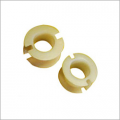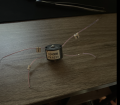hello, i have been attempting to find out this components use/name for just about a year at this point. I’ve asked quite a few of knowledgeable people. And not a single one has a clue. Nor does google lens, or anything on google. It’s not important, it’s just the fact that I can’t figure it out. So if anyone has some more knowledge then me( not hard) then please, enlighten me. Thanks in advance.
Attachments
-
1.6 MB Views: 37
-
1.8 MB Views: 36











